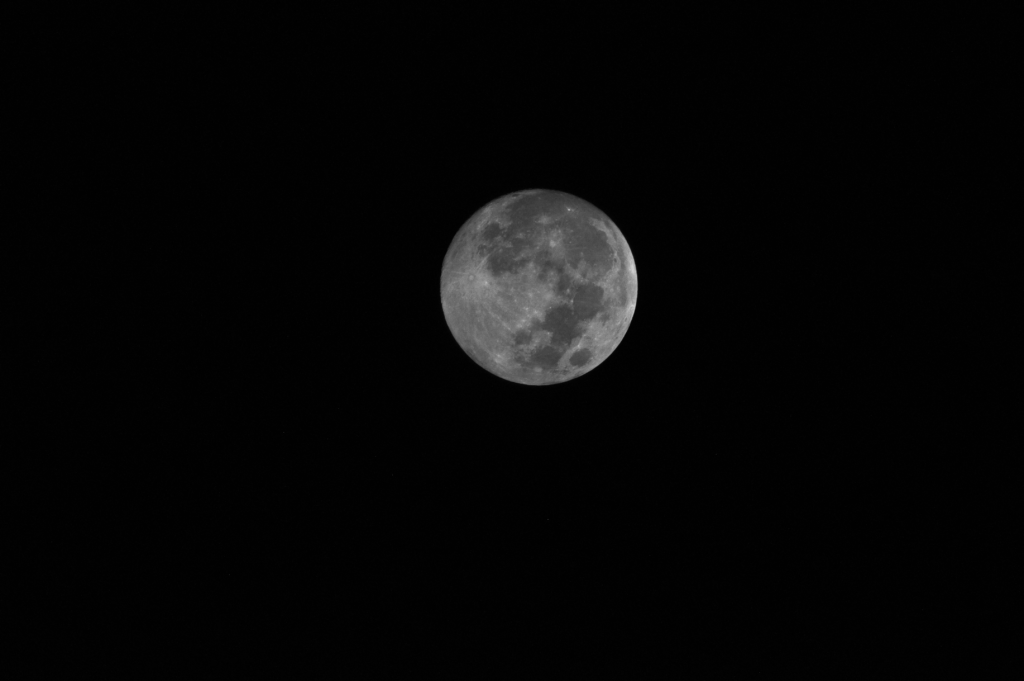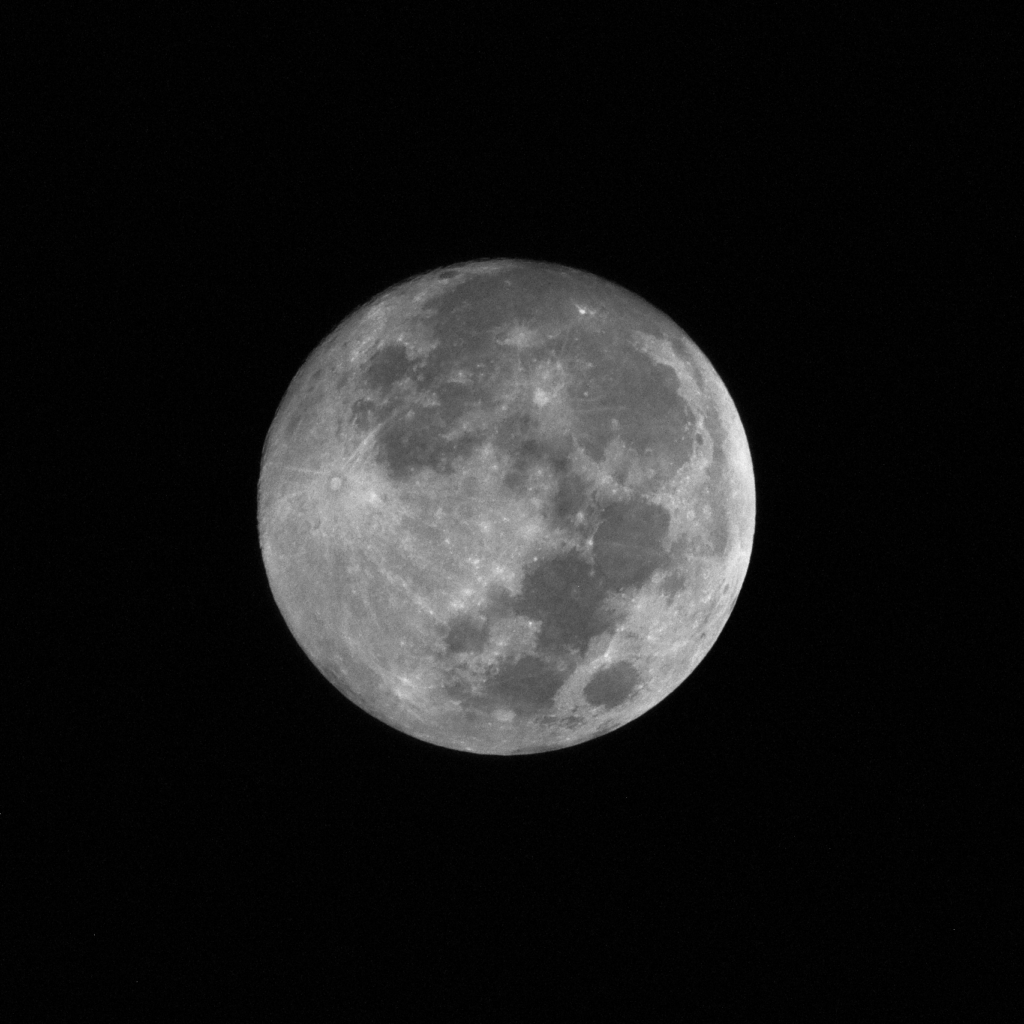I am beginning to document my procedures that will be used to capture the upcoming total solar eclipse (08 Apr 2024). To that end I purchased a small refractor telescope to match with my Nikon D-90. This will give me a broader field of view (FOV) than any other configurations that I can set up. Regular camera lenses that I have give me a very small Moon in the FOV. I’m not sure of the level of detail that will be visible with any of those. Using my portable telescope gives me a view of the Moon that, at best, totally fills up the FOV. That will not be large enough to capture the Sun’s corona during totality. So, I needed something in between my camera lenses and my current telescopes. I could have purchased a long camera lens but an equivalent focal length telescope was much cheaper. Plus, I get to use it as a telescope at other times. One can never have too many telescopes.
So, since the apparent size of the Moon matches the apparent size of the Sun, I used the nearly full Moon last night as a stand in. Properly centered, this will capture all of the corona with a large enough scale to see fine detail.

Below is a slightly stretched Moon cropped from the above image. The very bright small spot towards the top is the recently formed crater Aristarchus. Also easy to see at middle left is the crater Tycho with its extensive system of rays ejected during impact, some measured as long as 930 miles. Tycho is even younger than Aristarchus estimated to be only 108 million years old.
